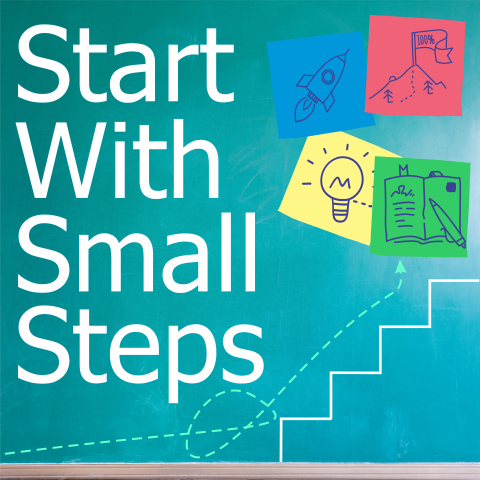🧠 What Makes Us Tick: Using Personality Tests to Understand Ourselves
Introduction: The Value of Self-Knowledge
Understanding what makes us tick is one of the most important and underrated skills in life. Knowing personal tendencies, strengths, motivators, and mental roadblocks makes it possible to choose better habits, build stronger relationships, and avoid unnecessary frustration. Personality tests, while not always scientific, offer frameworks that can help explain patterns in thought, feeling, and behavior. These tools aren’t about labeling—they’re about clarifying how the mind naturally works.
Identifying Patterns and Getting Unstuck
It often starts with noticing something isn’t working—struggling with motivation, bouncing between ideas, or failing to follow through on good intentions. Over time, a person might begin to recognize recurring patterns. Maybe to-do lists only work in specific formats. Maybe decision-making feels overwhelming unless certain conditions are met. Recognizing these patterns is the first real clue in figuring out what drives behavior—and what derails it.
That’s where personality assessments come in. They offer language and structure for understanding internal tendencies. And once something has a name, it’s easier to work with.
Myers-Briggs: Understanding Cognitive Preferences
The Myers-Briggs Type Indicator (MBTI) is often criticized for lacking scientific rigor, but it remains a useful tool for reflecting on how people perceive the world and make decisions. With four key dimensions—Introversion/Extroversion, Sensing/Intuition, Thinking/Feeling, and Judging/Perceiving—this framework creates 16 personality types.
The real power of MBTI lies in the ability to recognize how different types approach life. For example, extroverts often recharge through social interaction, while introverts may find it draining. Perceivers prefer keeping options open, while judgers feel more comfortable with clear decisions and plans. When framed this way, conflicts with others often become understandable differences in wiring, rather than flaws or incompatibilities.
MBTI can also offer insight into career paths, communication styles, and even stress responses. It’s a starting point for reflecting on how the mind prefers to operate.
The Four Tendencies: Motivation Decoded
The Four Tendencies, developed by Gretchen Rubin, narrows the focus specifically to how people respond to expectations. The categories are Upholders, Obligers, Questioners, and Rebels.
- Upholders meet both inner and outer expectations.
- Obligers meet outer expectations but struggle with inner ones.
- Questioners need to understand the “why” before they comply.
- Rebels resist both inner and outer expectations.
This framework strips away moral judgment from the conversation about motivation. Instead of asking, “Why can’t I just make myself do it?” the question becomes, “What structure supports my tendency?” For an Obliger, for example, external accountability is key—knowing that others are counting on them can turn a vague goal into consistent action.
The Four Tendencies can be especially helpful for habit formation, goal-setting, and designing personal systems that actually work.
StrengthsFinder: Focusing on What Works
Rather than diagnosing what’s wrong, StrengthsFinder offers a map of what’s right. It identifies individual talents and helps prioritize them in daily life and professional development. Categories like “Learner,” “Achiever,” “Empathy,” and “Strategic” describe natural ways of thinking and behaving.
This tool is especially powerful in work settings where teams need to collaborate. Instead of assigning people to roles they struggle with, StrengthsFinder helps align responsibilities with natural abilities. On a personal level, it can guide decision-making, clarify communication styles, and reduce burnout by highlighting where effort flows most naturally.
The full report—available with an upgrade—shows both strengths and relative weaknesses, allowing for a well-rounded view.
Additional Tools Worth Exploring
Several other personality assessments can add layers of insight:
- The Big Five (OCEAN) is backed by scientific research and covers Openness, Conscientiousness, Extraversion, Agreeableness, and Neuroticism. It’s often used in psychological studies and is valuable for understanding emotional stability and cognitive flexibility.
- The Enneagram identifies nine core types, each driven by specific fears and desires. While some find it too abstract, others use it to explore emotional responses and spiritual growth.
- The DISC Assessment focuses on work behavior and categorizes people based on Dominance, Influence, Steadiness, and Conscientiousness. It’s frequently used in corporate settings.
- Hogan Personality Inventory is designed to predict job performance and examines both “light side” and “dark side” personality traits. It’s practical for hiring and leadership development.
- MVPI (Motives, Values, Preferences Inventory) looks beyond personality traits to identify what people fundamentally care about—altruism, recognition, power, tradition, and more. It’s especially revealing for long-term goal alignment and life satisfaction.
Each of these tools offers a slightly different angle, and none are one-size-fits-all. The goal isn’t to agree with everything a test says, but to see what resonates and why.
Using Insights to Build a Better Life
Once the patterns are named, they can be used. For someone who thrives on external accountability, that might mean joining a fitness group or working with a coach. For someone energized by novelty and ideas, a career that demands strict routine might feel stifling.
The point isn’t to make the world adapt—but to create systems and choices that work with natural tendencies instead of against them. This might include:
- Choosing work environments that suit one’s strengths.
- Navigating relationships with greater empathy.
- Setting goals that reflect how motivation actually works.
- Avoiding unnecessary frustration by working smarter, not harder.
There’s a huge difference between being unmotivated and being misaligned. Personality tests can help bridge that gap.
Conclusion: Know Thyself, Live Better
Self-knowledge isn’t about being boxed in—it’s about being better equipped. Every person operates according to unique patterns, and understanding those patterns can make life simpler, more efficient, and more joyful.
No test offers a complete picture, but when used thoughtfully, personality assessments provide insight that can lead to wiser decisions and more intentional living. Aristotle was right: knowing yourself truly is the beginning of wisdom. When people know how they tick, they stop wasting energy trying to be someone else—and start building lives that actually fit.

